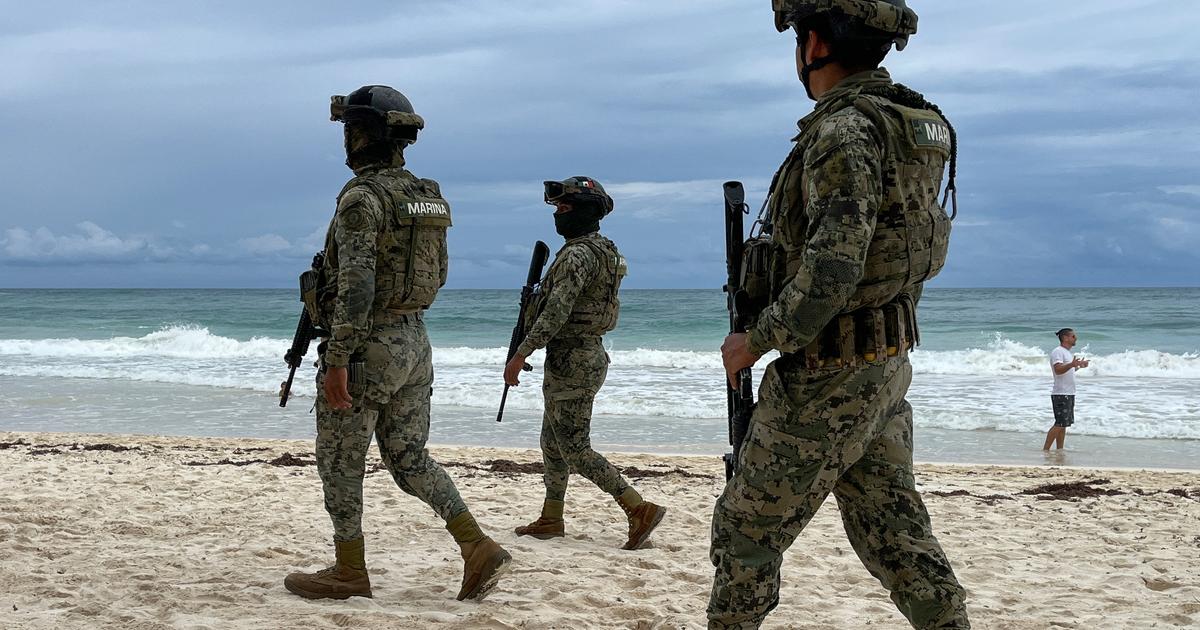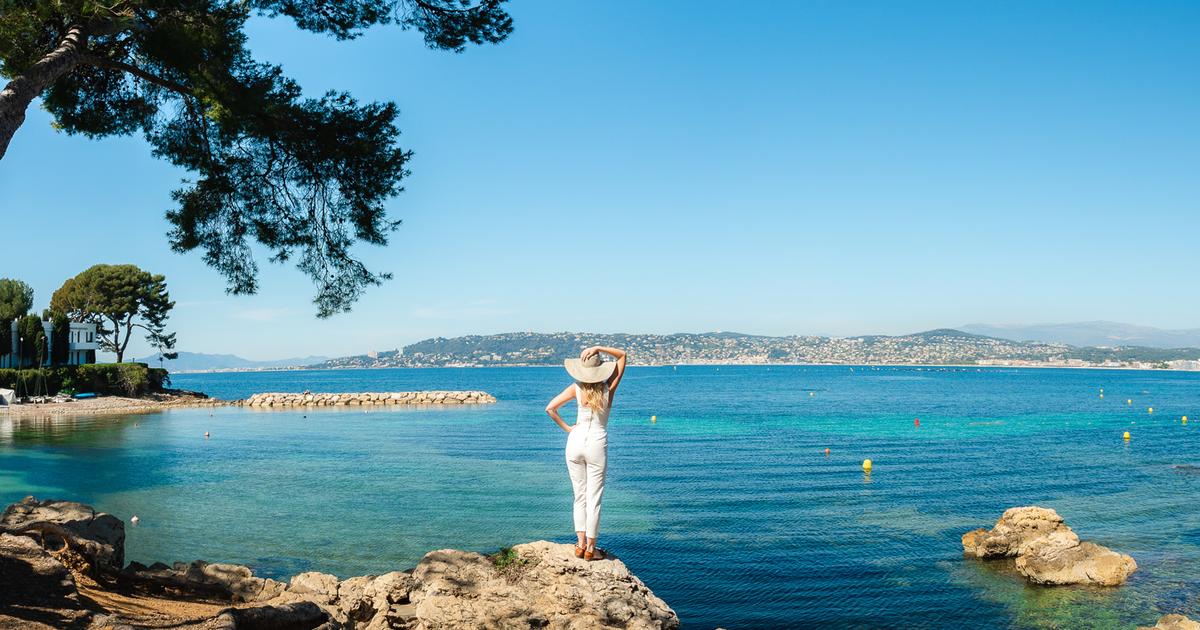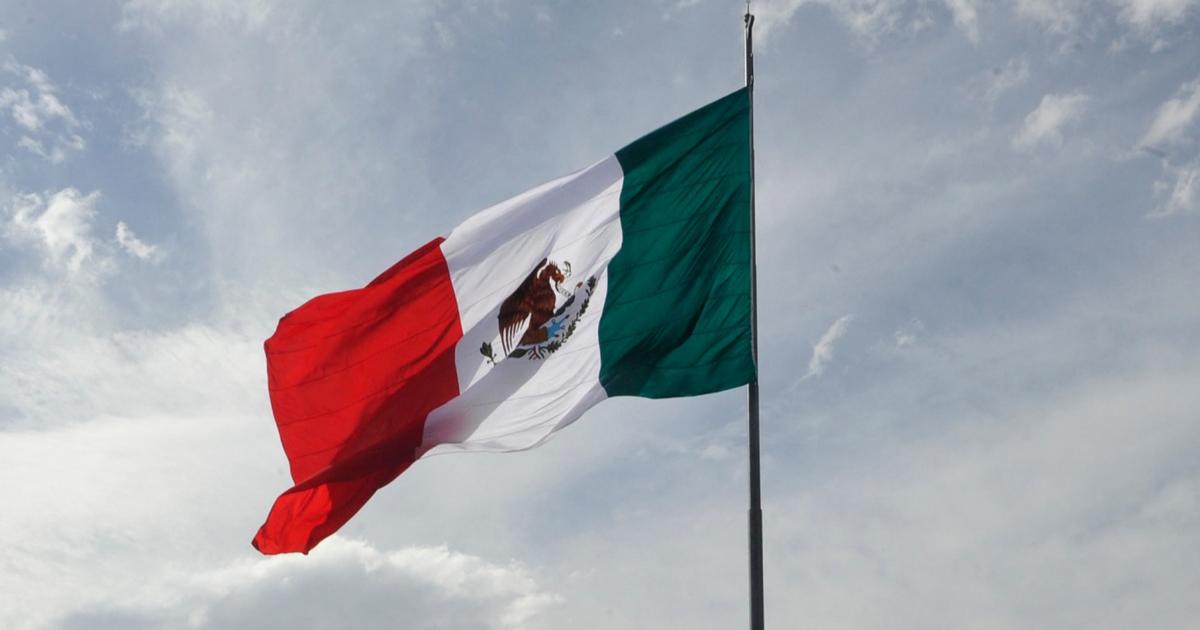The Walczak family is happy in the sun.
The parents drink Coca-Cola belly up on the sun lounger and the child plays in the sand without losing sight of the sea.
On the shore, a girl has just removed her bikini to take a
selfie
with her back to the regiment of tourists that pack the beach.
The Walczaks arrived from cold Warsaw almost two weeks ago and the Mexican Caribbean is tanning them inside and out.
“Our Polish friends said that we better go to the Canary Islands.
They were worried about the narco, but everything here has been margaritas and mojitos,” says the mother in somewhat orthopedic English.
They don't read newspapers in Spanish and they haven't seen the news lately either.
During the interview on the beach with the reporter they find out for the first time what happened a week ago behind their deckchairs.
Less than 20 steps up some stairs, past the Buddha bust but before reaching the massage room, the manager of Mamita's Beach Club was murdered in the bathroom.
The mother has just translated it into Polish for the rest of the family.
The father hugs his son and they don't want to talk anymore.
There were three shots.
One in the leg and two in the head.
Claudia Suárez, a Mexican businesswoman from the capital with a summer home here, in Playa del Carmen, tells it from the deck chair next to her.
“The one on the leg was a warning: 'Either you pay or we'll kill you'”, she explains as if she already knew the crime instruction manual by heart.
El Mamita's is the hot spot in the area, and except for a discreet black crepe on the entrance gate, nothing indicates that the manager was murdered a few days ago in the bathroom.
“People come here to enjoy their vacations.
In addition, what happened has already happened, ”Suárez continues while her husband spreads cream on his forehead.
"In Mexico it's like that: pretend that nothing has happened here."
Mexico has become accustomed to the daily violence that hits it in almost every corner.
The official figures have been installed in recent years above 90 murders a day, even surpassing the worst period of the so-called war on drugs.
But here, in the middle of the Riviera Maya, the tourist heart of the country, the violence seems more amortized than in any other place, an uncomfortable problem that is taken for granted if you want mojitos and mariachis.
Tourists spend the day on the beach at Mamita's Beach Club, in Playa del Carmen.Teresa de Miguel
tourism resists
The trickle of events on the beachfront — murders at close range, shootings, stray bullets — since last year does not seem to have affected the arrival of tourism, which after a fateful 2020 due to the pandemic has recovered better than the rest of the big global tourism destinations. Cancun closed last year as the second airport with the most international arrivals, only behind Dubai. There were more than 12 million visitors, something like if the entire population of Belgium traveled on vacation to the State of Quintana Roo, which barely has two million registered residents.
The state authorities defend that the latest events are the exception, isolated cases —of which they already have some first detainees— within the complexity of managing these gigantic movements of people in search, many times, of beach leisure during the day and party at night. That is to say: juicy businesses —legal and illegal— also for the drug trafficking mafias. Politicians put official security data on the table to scare away the alarm. The State is very far from the national murder rate. The daily average -90- for them is the number of monthly deaths. This January it even dropped to 34.
The figures have in fact been slightly reduced in the last two years while the media blows of organized crime have been repeated more than in other times.
This time, the focus has shifted from Cancun, the matrix of tourist development in the area, to the corridor that ends in Tulum to the south, the last pearl of the Riviera Maya.
About 200 kilometers of highway stuck in the middle of the jungle through which the giant doors of the even more disproportionate
resorts
, spas and private clubs parade.
Two members of the National Guard guard the beach in front of Mamita's Beach Club.Teresa de Miguel
Soldiers on the beaches
The biggest problems have now been concentrated halfway, in Playa del Carmen, an old fishing port that has been transformed since the 1990s into a city for vacations and parties.
Five days before the Mamita's bathroom crime, two Canadian tourists were killed in a shootout at the Xcaret hotel, the famous theme park 15 minutes away by car.
And in early November, an armed commando broke into another exclusive hotel nearby and killed two people at the reception.
Given the succession of blows, the president sent a checkpoint of 1,500 National Guard soldiers at the end of last year as a reinforcement for the entire Mexican Caribbean coast.
Boots, uniform and military helmet, in Playa del Carmen they are seen patrolling the sand of the beach where the two Mamita's killers escaped last week, on a jet ski.
It was five in the afternoon.
Four days later, the Prosecutor's Office presented three detainees, according to the authorities, thanks to the public security cameras.
Both, alleged members of a cell of the Sinaloa cartel.
The state police of Quintana Roo just inaugurated a new surveillance center in Cancun a few months ago.
An imposing enclosure the size of half a football field where the intelligence and control tasks of the more than 2,000 cameras distributed by the State are centralized.
The central room is a circular space with a giant screen, a kind of Matrix of more than 20 meters running 24 hours a day.
The Secretary of Public Security of Quintana Roo, Lucio Hernández, at the C5 facilities in Cancún, on February 3. Teresa de Miguel
fear of denouncing
From his headquarters, the Secretary of Public Security of Quintana Roo, Lucio Hernández, explains the details of the murder in the private club in Playa del Carmen. “The owners told us that they did not need the authority, that they had a good relationship with them and that they preferred not to file a complaint because they had had bad experiences. The crime stemmed from overconfidence. They don't have a word and what happens happens." “They” are the organized crime mafias that, according to the testimonies collected for this report on condition of anonymity, have the businessmen of Solidaridad, the municipality to which Playa del Carmen belongs, in a grip.
Extortion is the silent crime in the area.
The official statistics, which have been going down for the last three years, do not reflect the magnitude of the problem.
“For every 100 cases, only three or four complaints reach us,” admits Hernández.
That is why they are encouraging a system of anonymous complaints and new devices such as the infiltration of plainclothes policemen in businesses.
In December, the authorities removed street vendors from the main avenue, the Fifth.
"They are the disguise of the drug dealer," says the head of Security.
One of the Quinta's businessmen, who does not give his name out of fear, confirms the thesis.
“They control everything.
Drugs, alcohol, prostitution, lounge chairs, massages… and they have threatened the whole world”.
But he at the same time explains the secondary effect that the police have kicked them off the street has caused for them.
“Now they are losing money and that means they are putting more pressure on us.”
The businessman affirms that after several months of resisting, he could not take it anymore and agreed to pay 25,000 pesos -about 1,200 dollars- a month for each business.
“Our families —he adds— no longer go to the Quinta for fear of being recognized and kidnapped.
And the authorities do nothing.
We need vigilance and punishment.”
Two policemen in front of a nightclub on the popular Fifth Avenue of Playa del Carmen, on February 3.Teresa de Miguel
Mexican hit men and Canadian mobsters
The security guard no longer lets pass any tourist who wants to ask if there are free rooms at the Xcaret hotel, a 15-minute drive from Playa del Carmen.
This is how the pair of armed hit men who murdered two Canadian tourists two weeks ago in one of the hotel's bars managed to enter.
Xcaret is a mega tourist development the size of 150 soccer stadiums that includes a theme and archaeological park on an ancient Mayan city, a nature reserve with jaguars, sharks and dolphins and a compound with three hotels.
More than a million people pass through here every year.
How could a gun get into the compound?
The authorities justify themselves on the grounds of the difficulty of identifying the needle in the haystack.
And they defend again the effectiveness of the cameras, this time the private ones of the hotel.
Thanks to the tracking of the images, they managed to follow the track of the car in which the murderers fled until they reached the apartment where they were hiding.
Four days after the event, the State Prosecutor's Office announced that it had two detainees.
The information that has been announced since then by the authorities seems to be taken from a
Hollywood
thriller
. The victims, with criminal records in their country, belonged to a mafia of Canadian criminals with pending accounts within the group. The Mexican Caribbean was the place chosen to carry out the vendetta. Mexican hitmen hired by the Canadian mafias flew from Mexico City to assassinate the traitors. They followed them for days until they found the right moment, inside the exclusive hotel, to shoot them at close range.
“We have evidence of the entry into our territory of members of international crime gangs.
I cannot reveal from which countries out of respect for the embassies, but they pass themselves off as tourists and many times they come to later enter the United States,” says the Secretary of Security.
Last year, the Prosecutor's Office arrested the alleged leader of a Romanian criminal organization that operated in the main tourist centers of the State, duplicating tourists' credit cards.
Only Mexican, the authorities have identified at least three mafias: Sinaloa, Jalisco Nueva Generación Cartel —the two largest in the country— and the remains of the Gulf, the historic cartel that dominated the east coast of Mexico in the 1990s.
At that time, the south of Quintana Roo was one of the nodes of the so-called Caribbean route through which Colombian cocaine entered the United States. A route that, in fact, is still operating.
In the 1990s, a DEA investigation uncovered a money laundering network through real estate investments in Cancun that ended with the former PRI governor, Mario Villanueva, imprisoned in the US for money laundering and drug trafficking.
Police cordon in front of the La Malquerida mezcalería in Tulum, where a shootout took place that killed two tourists.Teresa de Miguel
Stray bullet or reckoning
Tulum is the last jewel of the Riviera Maya, at the end of the 200 kilometers of highway full of
resorts
.
Built on another natural park and another ancient Mayan city, the claim is different from the bulk tourism of the northern cities.
If in Playa del Carmen the offer is cheap alcohol, live mariachis and dancers in thongs, here things are more
eco-chic:
organic food,
new age
music and ayahuasca retreats.
The rise of Tulum, which plans to have a new international airport in the coming years, has been favored by the wave of violence in Playa del Carmen.
In 2017, a shooting at the electronic music festival caused five deaths and 15 injuries.
It was a turning point.
The event promoters decided to move to
Tulum's new
hipster sanctuary.
The violence despite everything has also hit the last pearl.
In October last year, a stray bullet in a restaurant killed an Indian and a German tourist, as well as injuring three other diners.
Three months later, a police patrol remains fixed at the gates of La Mezcalería, closed since that event.
A bartender at the bar across the street remembers that he was serving some beers when the shots were heard.
They put all the customers inside the premises and lowered the gate.
"When they left, people were screaming desperately," says the waiter, who is one of the few who did not decide to leave his job out of fear: "If you think about it, but we need the job." In September, a taxi driver and a security guard were gunned down in another shooting in the town. And in August, a man died after being shot in the back of the head, also in Tulum.
The new municipal police chief, Oscar Alberto Aparicio, has been in office for less than a week.
He comes from working in the intelligence department of the National Guard and among his first measures he has decided to install more cameras, hire more police officers and raise their salaries by 20%.
Regarding the event in La Mezcalería, he slides another line of investigation.
“Tourists are starting to buy drugs to resell.
To which the local mafias respond with violence.
On that occasion, it seems that they were told that two foreign girls were selling.
Upon arrival, they were mistaken for the two victims.”
This newspaper asked about this new thesis to the Prosecutor's Office, which insisted that, according to the images from the cameras, it was a conflict between two rival gangs and the crossfire ended the lives of the tourists.
The tourist explosion in the Mexican Caribbean was an invention of the PRI governments in the mid-1970s. Cancun, the first seed, was literally a city "fully planned" by the Ministry of Tourism in the middle of the jungle and archaeological ruins. The Riviera Maya brand was born in 1998 through the impulse of the hoteliers association. The rise of the Caribbean as a new destination for international tourism coincided with the decline of Acapulco, the playground of the
jet set
of Hollywood until the 70s. On its beaches it was usual to see Bette Davis, Rita Hayworth or Cary Grant.
Acapulco was extinguished precisely because of the social decomposition derived from political violence and organized crime.
Entrepreneurs in the Riviera Maya are already beginning to see the ghosts: "I hope we don't become the new Acapulco."
Members of the Navy walk the beach in front of Mamita's Beach Club, in Playa del Carmen, Quintana Roo, on February 2, 2022.Teresa de Miguel
subscribe here
to the
newsletter
of EL PAÍS México and receive all the informative keys of the current affairs of this country


/cloudfront-eu-central-1.images.arcpublishing.com/prisa/JLX4IXAS25BVBICTHHWJ3AT5IY.jpg)

/cloudfront-eu-central-1.images.arcpublishing.com/prisa/H6SX4JB4HJIOMBO3FUP6IGGLUI.jpg)




